|
|
|
|
|
|
|
The case is solid mahogany and has cleaned up very well. The split in the door went back together with wood glue and is almost invisible now. The varnish on the case is intact and positively shines now. The case was cleaned with the following home-made brew which an antique dealer told me about:- The case (excluding pediment and base bracket) is 5 inches taller than the later, rounded-corner, case. There is extra space above the movement casting, which is behind the dial. This is referred to further down this page. |
|
|
|
|
The movement, missing its crutch, before cleaning. |
The pendulum bob before cleaning. |
|
|
|
|
The pilot dial is silvered with engraved marking filled with black material. It also has G&J's name engraved. Most clocks apparently do not have the name on the dial. The minute hand is counterbalanced with a round lead weight. |
The pilot dial (before restoration) does not have the earlier form of movement. |
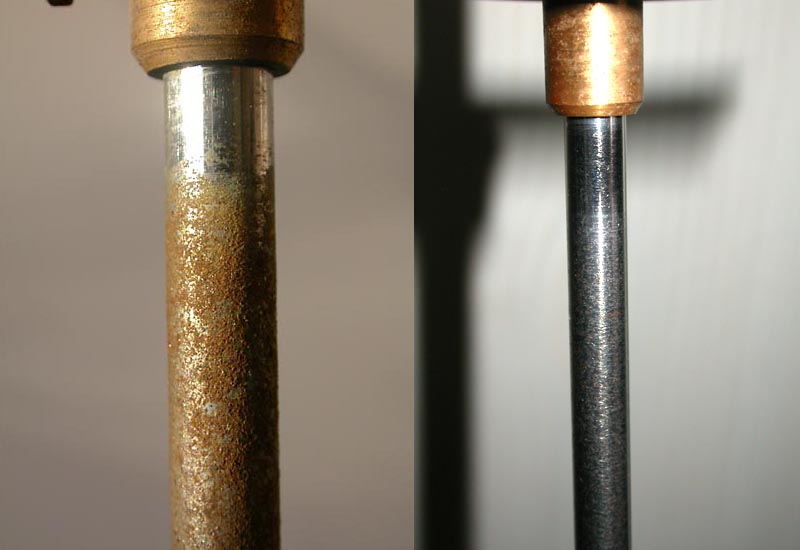
|
The pendulum rod was rusty. The loose rust was gently brushed off with a wire brush. The rod was mounted in the lathe and very fine emery paper was used with a low lathe speed to try to restore the surface. A final polish with Duraglit wadding brought back a bit of shine. On close inspection the pitting from the rust is still visible, but the rod now has a grained appearance that masks the pitting from normal viewing distance. The original polished surface can be seen where the rating tray had been. Compared with the diameter of the undamaged rod that was inside the bob, this treatment has reduced the diameter by no more than half a thou. |
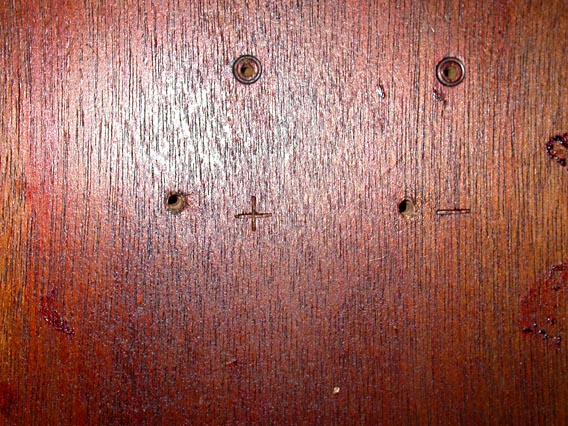
|
The space above the movement casting (see also first picture) has four empty screw holes. The upper pair are not original and held a modern power supply to run the clock. However, the lower pair of screw holes are possibly original because the '+' and '-' signs impressed into the wood look too neat and tidy to be an amateur addition. Were terminals mounted here to connect the clock to its power source? If so, what form did they take? Why mark the polarity? There's not usually anything polarity sensitive in these clocks. |
|
During the early part of 2008 I started to fabricate the missing pendulum crutch. Luckily, I had access to another G&J master clock which was a later clock in a round-cornered style case similar to that used by Synchronome. I used the crutch from this as a pattern for my reconstruction. The genuine G&J crutch was cast from brass and was made as a single piece. The impulse profile is machined or filed to shape from the casting. |
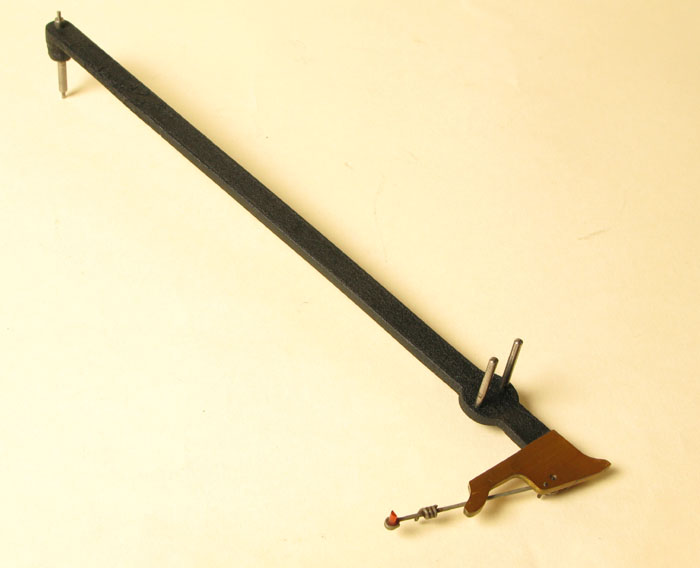
The genuine crutch from another clock, used as a template.
|
The pins that embrace the pendulum rod are fitted into a wider, circular, part of the casting. As a single piece this is a complicated shape. I decided not to have a casting made (mainly because of the expense for a single piece) and had to find a way of fabricating it from parts. I made the impulse pallet, the drop-arm, and the circular part for the pins from cast brass bar and rod, and the pivot arbor from steel rod. |
|
|
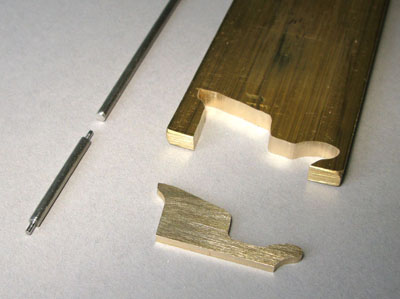 |
|
The pallet was cut using a piercing saw to a paper template stuck to the metal. The bar was too thick for the required size of the pallet and had to be milled to size. The pallet was then filed to match exactly the profile of the original. |
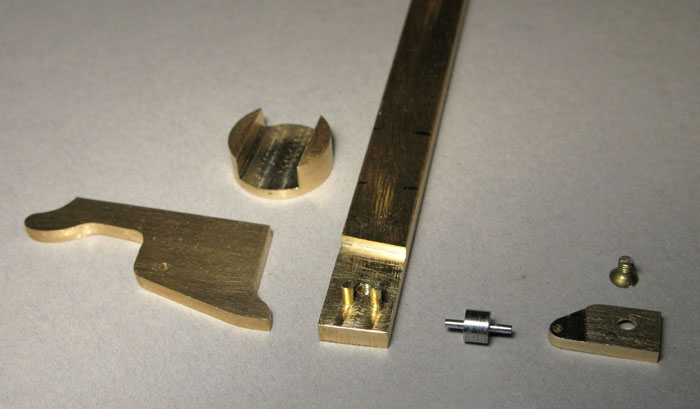
|
The drop-arm was also milled to the correct dimensions with a step to accommodate the impulse pallet. The gathering wire/jewel is pivoted in the impulse pallet with a small cock mounted behind. The pivot for the gathering wire was turned from steel rod, and the brass cock was cut from brass bar. Steady pins were arranged such that they fitted into blind holes in the impulse pallet and passed through the drop-arm into the cock. Having located these items correctly on the steady pins, the pivot hole for the gather wire pivot was drilled through the complete assembly. |
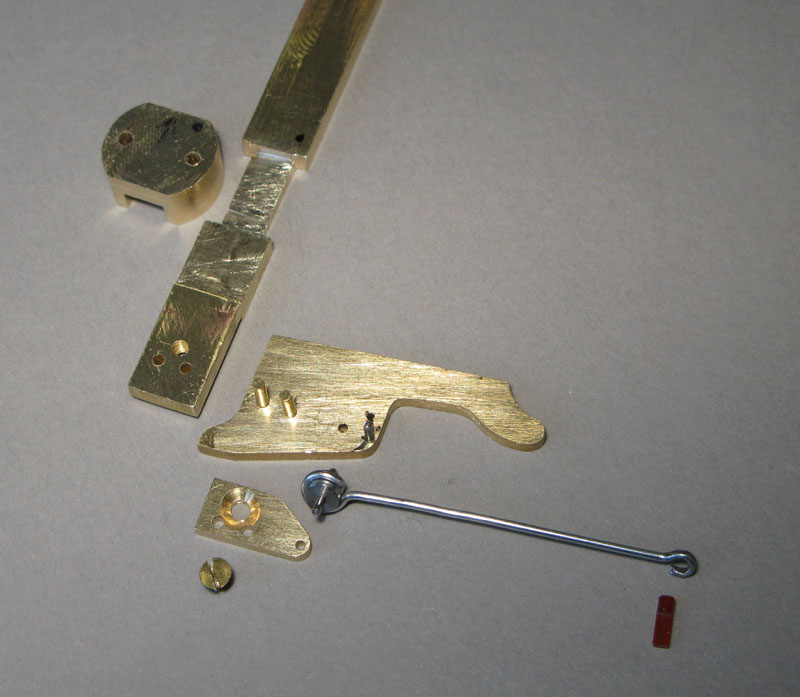
|
The gathering wire was bent to shape in a specially made jig based on the dimensions of the original wire in the complete clock. The circular section on the drop-arm that carries the pins that embrace the pendulum rod was fitted by means of a half-lap joint, and then filed to be the same thickness as the drop-arm. |
The crutch was assembled....
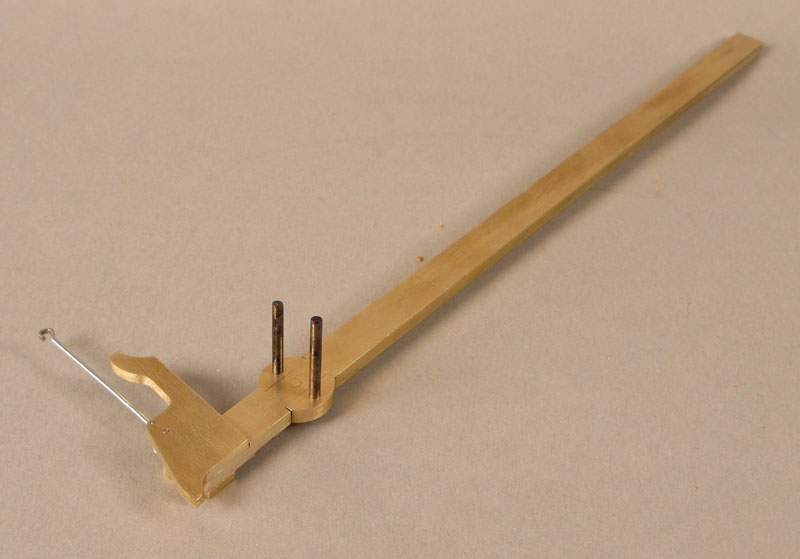
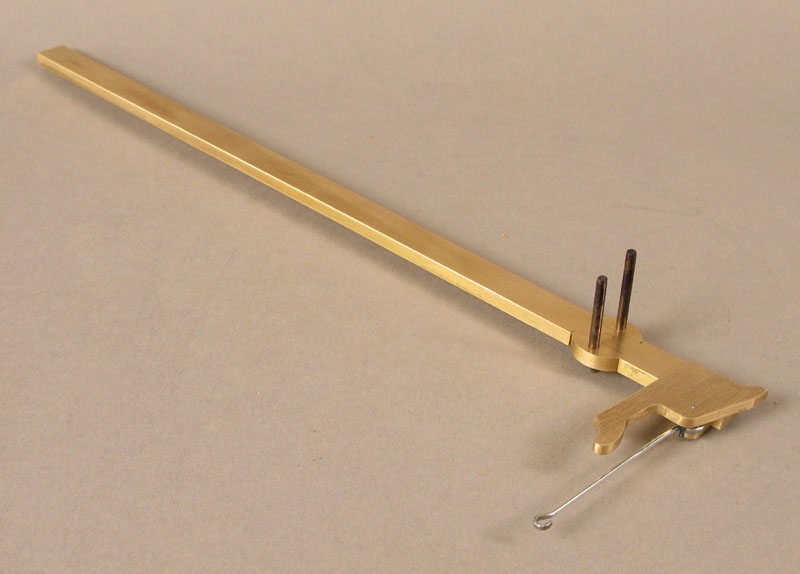
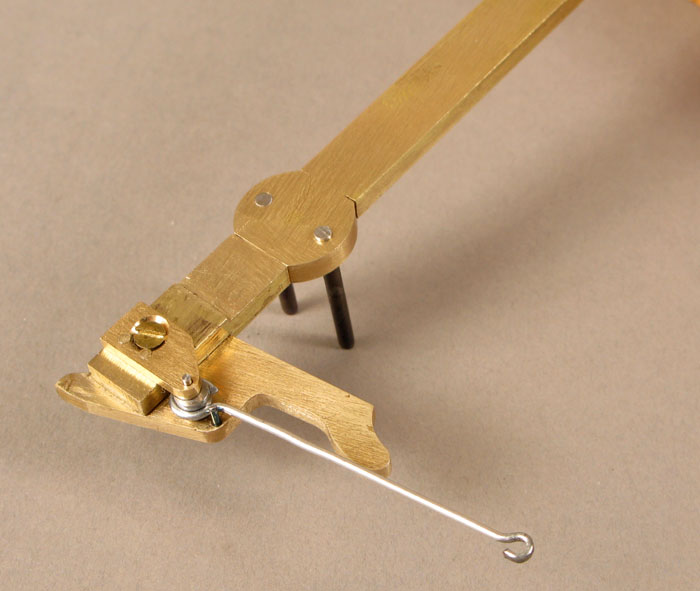
|
The exact length from the top of the impulse pallet to the pivot point was measured from the pattern and was set out on the new piece. The pivot was installed. |
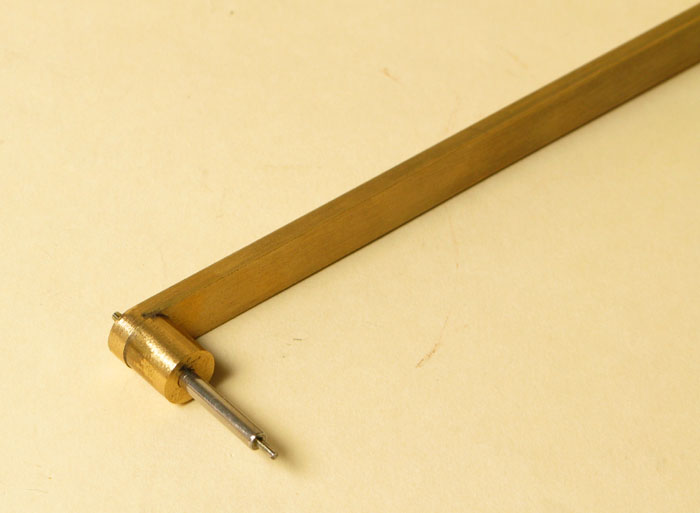
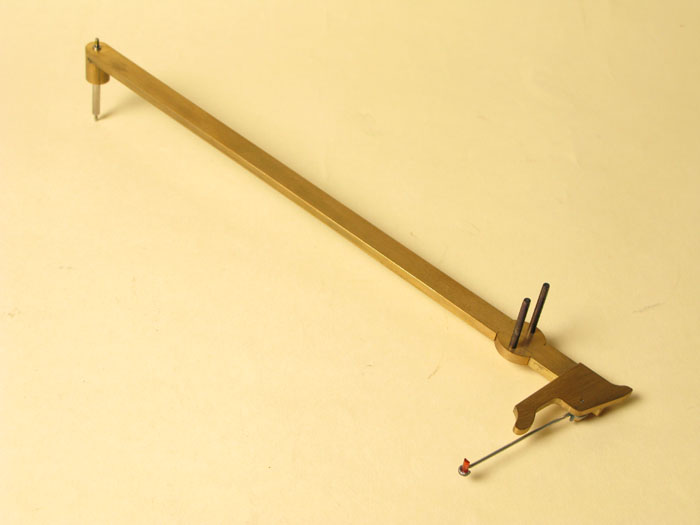
The completed crutch, minus its coat of black paint.
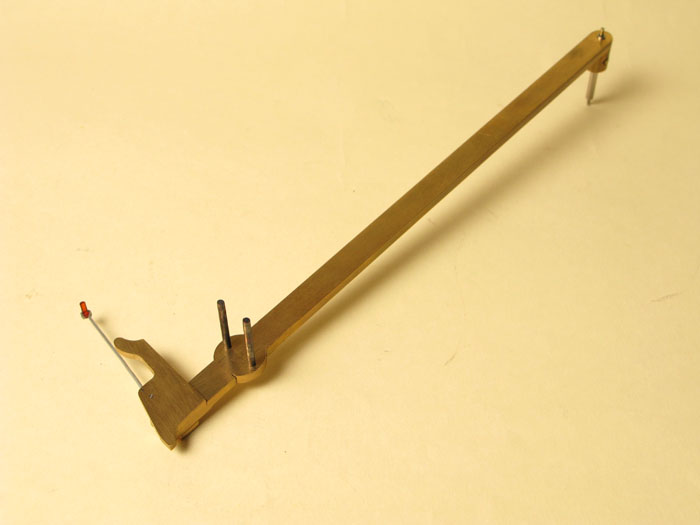
How does it match up to the original?
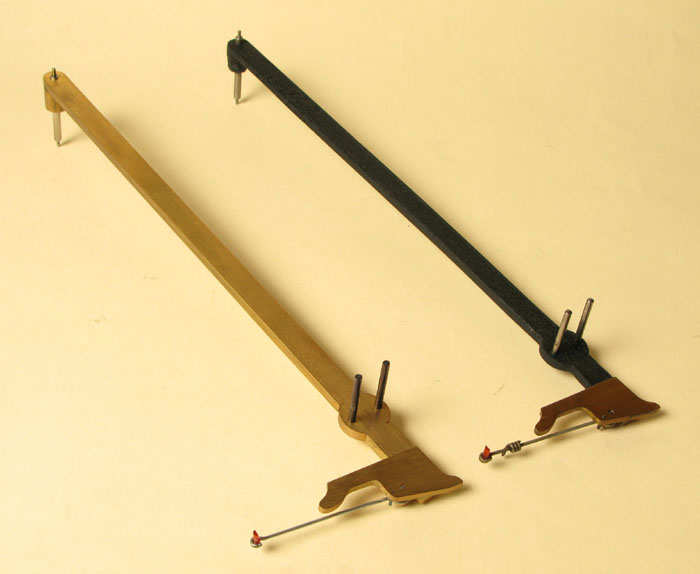
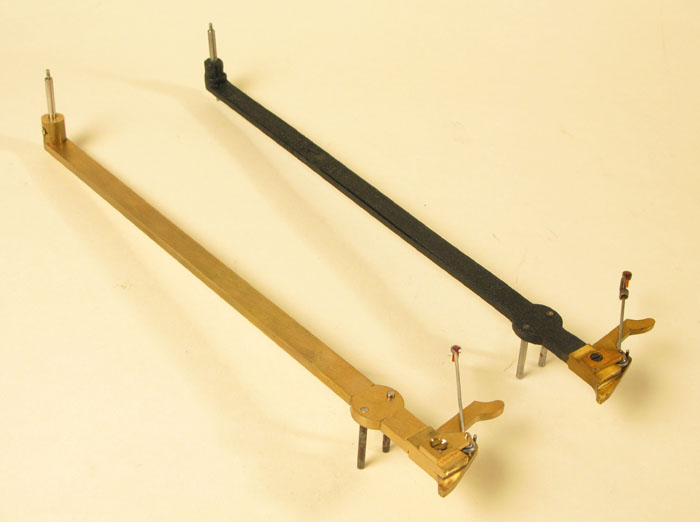
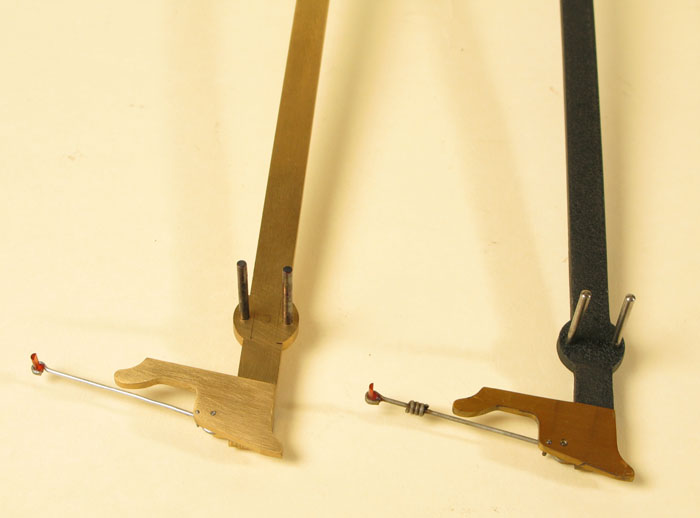
The clock from which the pattern came has an Advance/Retard mechanism,
hence the wire bound round the gathering arm.
All that remains to do is a coat of black paint, lacquer to the brass, and the pins to be polished, but the clock is running fine!
|
|
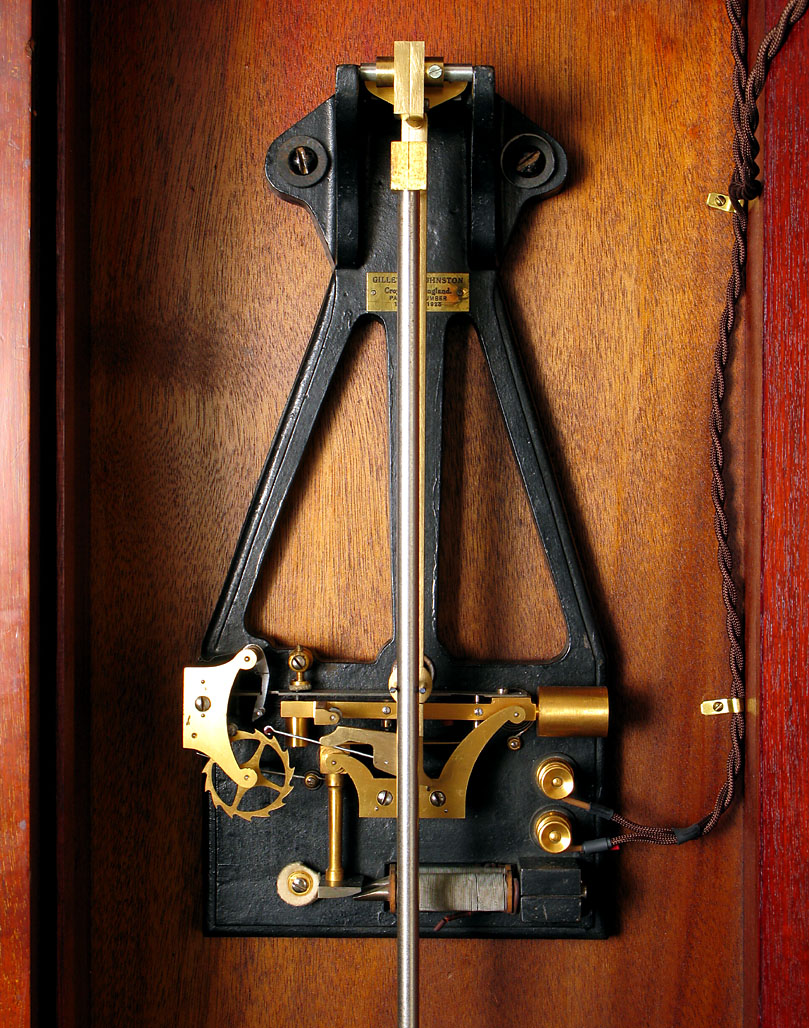 |
| The completed clock | The movement |
MOVIE of resetting action for this clock (400KB - 'wmv' file for Windows Media Player)
MOVIE of Normal, Retard, Advance action where fitted to a clock (1.8MB - 'wmv' file for Windows Media Player)
Postscript:
|
Having made the new crutch, I discovered that the shape of the impulse pallet should have been very slightly different! The pattern I used was from a late G&J clock, and I had not realised there was a design change. The overall dimensions of the crutch appear the same, but the detailed shaping of the lower part of the pallet is different.
An original from a contemporary clock. |
© Martin Ridout. February 2009